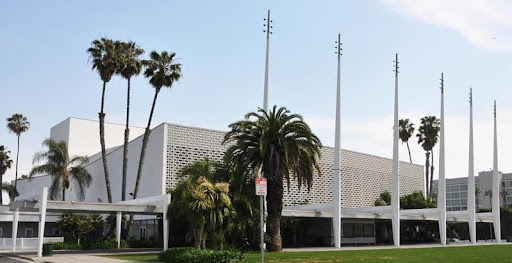
Parking. In buildings. On the street. How important can that be? Who does it impact? And after decades of discussion, why is it still a controversial topic?
This, like several other state land use and urban planning policies, has as its key impact the increase in inequality.
New Buildings
A number of new affordable and inclusionary housing projects are allowing a less than 1:1 ratio of units to parking. Reducing the ratio of parking spaces per housing unit (or outright elimination of parking) and “unbundling” parking whereby tenants can choose to have no parking at all are set to become commonplace.
New state laws provide, and planning staff have openly endorsed, the idea that parking requirements should be waived entirely in new developments to pack in more units. In fact, a new draft state bill, AB 2097, has just been introduced that eliminates local governments’ ability to either impose any minimum parking requirements or to enforce a minimum parking requirement on residential or commercial developments if the parcel is located within one-half mile of public transit (i.e., bus lines).
Who benefits from this approach and these state initiatives? Investors stand to significantly increase the profitability of these projects because they can increase the number of units in a project, proportional to the amount of parking they can eliminate. Cities get to increase the new housing credit per project to apply against state housing mandates such as the 8,895-unit housing target set for Santa Monica by the State’s Regional Housing Needs Assessment (RHNA).
What is entirely missing in this calculation, as usual, is (1) the impact on those residents who would occupy such inadequately parking-provisioned units and (2) overflow of cars onto neighborhood streets where they compete for space with existing residents.
Accessing a Higher Quality of Life
Much discussion around this topic addresses the design of an “ideal” city where cars may be optional but not required. As a private transportation-centric legacy city within a parallel legacy metropolis, Santa Monica’s design is fixed, in concrete, asphalt and steel. This area’s transit network utility is defined by private transportation. That is the only relevant scenario in the discussion of costs and benefits.
It turns out that in legacy cities such as Santa Monica, the mobility utility that parking enables is essential to accessing fundamental quality-of-life, especially the opportunities to fully participate in job advancement and social mobility in areas like Greater Los Angeles.
According to demographer Wendell Cox, access to a car in Los Angeles provides 34 times the number of job opportunities than reliance on public transportation alone can provide. Access to job opportunities is fundamental to economic security. In Los Angeles County, and Santa Monica specifically, social interaction is city and county-wide, and jobs are not only found along bus corridors.
Moreover, the transit utility value of private transportation is much greater for those in the lower income brackets, as was noted by the UCLA Institute of Transportation Studies in their 2018 report prepared for the Southern California Association of Governments (SCAG). In its conclusion, the report noted that “A car trip by a low-income household is more likely than one by an affluent household to involve finding and keeping work, getting to school, or accessing better health and daycare options.
The UCLA report concluded with the following observation:
“… some Southern Californians – the poorest of them – drive too little, and both their lives and the region as a whole would be improved if they drove a bit more. The low-income person who acquires a vehicle often makes fewer trips than an affluent person (driving is expensive) and the trips they make are often essential, and have social benefits that exceed their social costs. A car trip by a low-income household is more likely than one by an affluent household to involve finding and keeping work, getting to school, or accessing better health and daycare options.”
Can public transportation replace private transportation in a legacy city like Santa Monica?
The answer appears to be a “No.” From 2010 to 2019 (pre-pandemic), total Big Blue Bus (BBB) passenger trips declined 45%. The BBB suffered its largest pre-pandemic loss of ridership in 2016 when 2.1 million passenger trips were lost.
In an attempt to address the significant limitations of public transit in actually delivering competitive and fully inclusive transit utility (which includes the ability to carry cargo like weekly groceries), the BBB developed a novel solution in 2017 called Mobility On-Demand Every Day Program (MODE). This program provides highly subsidized access to Transportation Network Companies (i.e., private cars – currently Lyft) to Santa Monica residents who are at least 65-years-old, or at least 18-years-old with a disability.
MODE customers receive a total of thirty (30) one-way trips per month, including Lyft Shared and wheelchair van rides, limited to the Santa Monica city limits during specific hours of operation. Select shopping destinations on Lincoln Blvd. in Venice are included as well as select medical facilities. The program does not address the larger transportation network needs of Santa Monica residents within Los Angeles County.
Duplicating the fully inclusive utility of private transportation would require a robust and integrated London-style multi-modal transit system. Retrofitting any such system in a private-vehicle based legacy city such as Santa Monica is simply not feasible. The one Metro E Line (Expo) rail extension into Santa Monica cost $100 million for each of its 15.1 miles.
How is the assumption of public and private transit interchangeability impacting Santa Monica’s future?
It turns out that around 45% (4,100 to 4,300) of the total RHNA 8,895-unit housing target assigned to Santa Monica assumes adjacency to what are referred to as High Quality Transit Areas (HQTA). The bar to qualify as a HQTA is very low. It is defined as areas within a half‐mile of transit stations and corridors with at least a fifteen (15) minute service interval during peak hours for bus service.
So, almost half of the RHNA allocation to Santa Monica is based on an assumption of utility that is unachievable in the real world.
What about the coming EV charging requirements?
The absence of parking capacity ensures that there will be no capability for these buildings to eventually accept the necessary charging equipment. This cannot be more critical since the California Air Resources Board’s goal is to achieve at least 61% of new vehicle sales being EVs by 2030 while 2035 is the year set for an outright ban on the sale of new gas-powered cars in the state.
This will further deny the residents in parking-restricted buildings the opportunity to fully participate in life’s mainstream and access the full range of economic opportunities.
What are the issues with using a land use policy approach to parking?
Since we are discussing parking within the context of land use policy, the unforced errors of this misguided policy of restricting parking will also be set in concrete, negatively impacting neighborhoods and residents’ futures for decades.
Developing real estate in an iconic, globally-branded destination coastal city that is Santa Monica is inherently lucrative. Recent state land use and upzoning laws have made it even more so. How then can the tradeoff of enhancing project profitability, primarily at the expense of lower and moderate-income residents and families, be a policy priority?
An argument will likely be made that enhanced project profitability is necessary to help subsidize incremental affordable units. But, if the cost of those incremental affordable units is the increased, and permanent, inequality for potentially all the residents in the building, then that is clearly an unacceptable tradeoff.
Such is the result of this land use policy that it eliminates a known, and valuable, commodity – parking and the networked mobility options it enables – for a demonstrably inadequate current alternative accompanied by a vague notion of some future enhanced transit structure that cannot be delivered.
Getting our priorities straight
We are heading on a path of increasing inequality by adopting housing policy that locks in discrimination against those most in need of highly flexible and effective transportation options. We are locking in the endless creation of street congestion from unbundled parking. Both are investor subsidies at the expense of residents, current and future.
Obviously, this is not a planning approach that prioritizes providing all residents with the maximum opportunities to access economic progress and engage with life.
This is also a guaranteed path to the creation of very expensive substandard housing in a city that cannot afford any more housing errors in its fixed 8.4 square miles. The damage to the community created by the substandard housing created by adequate parking will last generations.
By Marc L. Verville for SMa.r.t. (Santa Monica Architects for a Responsible Tomorrow).
Thane Roberts, Architect, Robert H. Taylor AIA; Ron Goldman FAIA, Architect; Dan Jansenson, Architect, Building and Fire-Life Safety Commission; Samuel Tolkin Architect; Mario Fonda-Bonardi, AIA, Planning Commissioner; Marc L. Verville M.B.A., CPA (inactive); Michael Jolly, AIRCRE
Note: Marc lived in central London from 1992 to 2000.
References:
Falling Transit Ridership: California and Southern California
A report prepared by the UCLA Institute of Transportation Studies for the Southern California Association of Governments (SCAG) – January 2018
https://scag.ca.gov/sites/main/files/file-attachments/its_scag_transit_ridership.pdf













